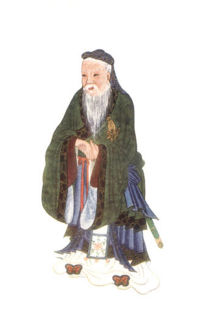Atheist Weddings
 From Conservapedia
From Conservapedia Atheist weddings vary in how they are conducted depending on the region of the world (see: Global atheism).
The current atheist population mostly resides in East Asia (particularly China) and in secular Europe/Australia primarily among whites.[1] See: Asian atheism and European desecularization in the 21st century and Western atheism and race
Per capita atheists marry significantly less (see: Atheism and marriage and Atheism and fertility rates).
Contents
- 1 Atheist weddings in the Western World
- 1.1 Atheist weddings in churches
- 1.2 Many Western atheists women wear white wedding gowns despite many of them engaging in sexual relationships before marriage
- 2 Atheist weddings in China
- 2.1 The four bows in Chinese weddings
- 3 Atheist weddings in North Korea
- 4 See also
- 5 Notes
Atheist weddings in the Western World[edit]
Due to the Christianization of the Western World, in the West atheist weddings are generally similar to Christian weddings minus the religious elements.
Due to the limited amount of atheist music about love and marriage (see: Atheist music and Atheism and romance and Atheism and love), atheist weddings feature nonreligious songs, but not atheist wedding songs.
Atheist weddings in churches[edit]
See also: Atheism and architecture
According to an international study done by William Bainbridge, atheism is common among people whose interpersonal social obligations are weak and is also connected to lower fertility rates in advanced industrial nations (See also: Atheism and loneliness and Atheism and fertility rates).[2] As a result, atheists do not have a significant tradition of constructing aesthetically pleasing buildings to gather in (see: Atheism and architecture).
The website Learning Religions indicates about atheist weddings: "Some of these are religious in appearance or name, but not really in act. What this means is that the wedding itself may take place in a church and may contain many of the familiar rituals which have a religious connotation for some."[3]
Many Western atheists women wear white wedding gowns despite many of them engaging in sexual relationships before marriage[edit]
See also: Atheism and morality and Atheism and sexual immorality articles

Brides wearing white wedding gowns is a symbol of sexual purity before marriage.
The Barna Group found that atheists and agnostics in America were more likely, than theists in America, to look upon the following behaviors as morally acceptable: illegal drug use; excessive drinking; sexual relationships outside of marriage; abortion; cohabitating with someone of opposite sex outside of marriage; obscene language; gambling; pornography and obscene sexual behavior; and engaging in homosexuality/bisexuality.[4] See also: Atheism and sexual immorality articles
The Google image search for the term atheist weddings shows a very large percentage of atheist women wearing white wedding gowns despite the fact that many atheist women have sexual relationships before marriage.
Atheist weddings in China[edit]

See also: Asian atheism
It is likely that most atheists are East Asians (see: Asian atheism).
China has the world's largest atheist population and has state atheism (see: China and atheism).[5][6]
In recent times, Confucian wedding rituals have become popular in China. In these type of ceremonies, which are a recent invention with no historic precedent, the bride and groom both bow and pay respects to a large portrait of Confucius hanging inside the banquet hall while wedding attendants and the couple are dressed in traditional Chinese robes.[7]
The four bows in Chinese weddings[edit]
Before the bride and groom enter the nuptial chambers, they exchange nuptial cups and perform ceremonial bows as follows:[8]
1. First bow - Heaven and Earth
2. Second bow - ancestors
3. Third bow - parents
4. Fourth bow - spouse[8]
Atheist weddings in North Korea[edit]

North Korea has state atheism and public religion is actively discouraged.[10]
The Guardian reports:
| “ | In North Korea, your wedding isn’t just your moment, because the government and Workers’ Party often intervene. There’s no such thing as a bouquet being thrown in the DPRK, instead newlyweds bring flowers to pay respects to the statue of Supreme Leader Kim Il-sung immediately after their official ceremony.
Wedding photos are also taken at the statue. It’s not forced upon the newlyweds, but most couples feel obligated. There’s also one very important rule: you cannot walk down the aisle on 15 April or 16 February, the birthdays of the former leaders. Most ceremonies are still held in the traditional way, passed down for generations. If you’ve ever watched a Korean drama, most often they depict the bride and groom wearing traditional hanbok dresses, with their neighbours and relatives coming to congratulate them while enjoying food and liquor, which is true to life for most North Koreans.[11] |
” |
See also: North Korea Just Temporarily Banned Weddings, Funerals, And Leaving Pyongyang
See also[edit]
- Atheism and marriage
- Atheist marriages
- Atheism, rites and rituals
- Atheist funerals
Notes[edit]
- ↑ A surprising map of where the world’s atheists live, By Max Fisher and Caitlin Dewey, Washington Post, May 23, 2013
- ↑ Bainbridge, William (2005). "Atheism" (PDF). Interdisciplinary Journal of Research on Religion. 1 (Article 2): 1–26.
- ↑ Non-Religious Wedding Options For Atheists
- ↑ Practical outcomes replace biblical principles as the moral standard, Barna Group
- ↑ Top 50 Countries With Highest Proportion of Atheists / Agnostics (Zuckerman, 2005)
- ↑ A surprising map of where the world’s atheists live, Washington Post By Max Fisher and Caitlin Dewey May 23, 2013
- ↑ 江苏将推广设立离婚缓冲室(Chinese), sina.com, May 23, 2011
- ↑ Li Wenxian (2011). "Worshipping in the Ancestral Hall". Encyclopedia of Taiwan. Taipei: Council for Cultural Affairs. Retrieved 12 September 2012.
- ↑ Ask a North Korean: what happens on your wedding day?, The Guardian
- ↑ Elizabeth Raum. North Korea. Series: Countries Around the World. Heinemann, 2012. ISBN 1432961330. p. 28
- ↑ Ask a North Korean: what happens on your wedding day?, The Guardian
Categories: [Atheism]
↧ Download as ZWI file | Last modified: 02/27/2023 10:13:41 | 13 views
☰ Source: https://www.conservapedia.com/Atheist_weddings | License: CC BY-SA 3.0
 ZWI signed:
ZWI signed: KSF
KSF